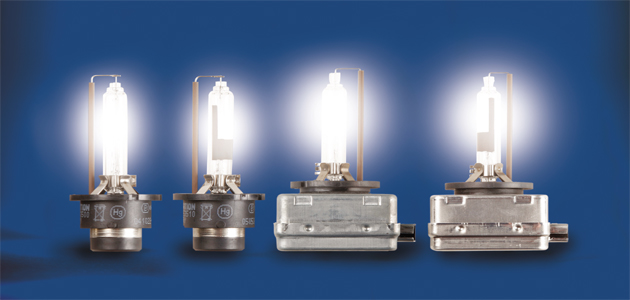
High Intensity Discharge (HID) headlamp bulbs – also known as Gas Discharge or Xenon bulbs – have steadily increased in usage across the automotive market. Yet for mechanics and technicians they’re sometimes a misunderstood product.
The obvious difference is that HID bulbs have no filament; instead there is a glass capsule in the centre of the bulb containing Xenon gas.
Two metal electrodes going into the glass capsule enables a high-voltage pulse to cross the Xenon gas in an arch shape. This voltage ignites the gas to produce a bright white light output and is very similar to the way that fluorescent tubes work.

Why are mechanics put off?
The bit that can throw mechanics off is the start-up voltage that pules across the Xenon gas to form the arch. This voltage has to be very high – typically up to 24,000V. A ballast is required for each headlamp and this is used to convert the vehicle’s 12V DC voltage into 2,400V AC to ignite the bulb and maintain a lower operating voltage.
The operating voltage is 85V for D1 and D2 HID bulbs and 42V for D3 and D4 HID bulbs. Clearly this high start-up voltage can be potentially hazardous; however following safety instructions properly will ensure that HID bulbs can be fitted safely. Types of HID bulbs
There are for cap-type references of HID bulbs – D1, D2, D3 & D4 – and these all come with a suffix of either R or S (for example, D1R or D1S). Bulbs with the suffix R are designed to work in Complex Surface headlamp units, while bulbs with the suffix S are designed to work in Projector headlamps.
All HID bulbs must be fitted with a direct replacement, so if you remove a D2R HID bulb, it must be replaced with a D2R HID bulb. D1 and D3 bulbs have the ignition/starter pack fitted to the bulb, whereas D2 and D4 bulbs do not. Furthermore, the ignition/starter is combined with the ballast.
D3 and D4 bulbs are recent additions to the range; they’re designed to work with new compact ballasts and are already being fitted to Audi, BMW and Lexus variants. They contain less mercury, so have better eco-friendly credentials, and they also run at a lower voltage of 42V once operating.
HID bulbs and HID headlamp systems are only street legal if the bulbs being fitted are E marked and fitted to cars that have auto levelling to prevent dazzle and a wash/wipe to prevent the light scattering from dirt on the lens.
Benefits to the customer and mechanic
There are various reasons for using HID bulbs: they’re three times brighter than a halogen bulb and also have an incredibly long life, averaging around 2,500 hours of use; they also boast a higher luminance than Halogen bulbs – normally 3,200 lumens; finally, colour temperature is significantly improved, producing a light output that is close to daylight.
The benefit to mechanics for fitting HID bulbs is twofold: firstly, they’re not losing a customer to a main dealer or another garage that can replace HID bulbs. Secondly, fitting HID bulbs increases a garage’s sales margin, particularly during the winter months.
Fitting is easy
The high start-up voltage is potentially hazardous and is, understandably, the main concern for mechanics. But, rather than refer the owner back to a main dealer, mechanics can change HID bulbs safely by following some simple steps. The first thing to do is isolate the light circuit. Turn off the ignition and headlight switch, and then isolate the headlamp circuit by removing the relevant lighting fuse.
As an additional precaution, leave five minutes for the bulb to cool down. After this, proceed to change the bulb as you would do a normal headlamp bulb and remove the bulb cover. Unplug the bulb connector and then remove the HID bulb, replacing it with the same reference type.
Once the bulb has been replaced, reverse the fitting process, remembering to re-install the fuse.









